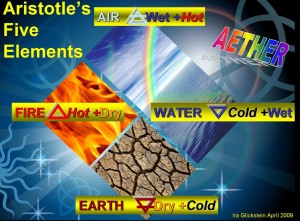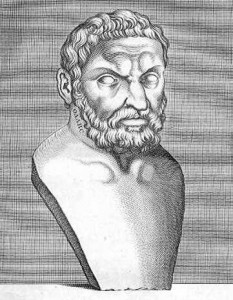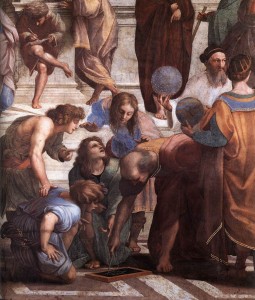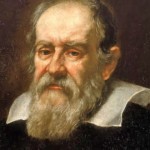Isaac Newton (1642-1727) has often been called the greatest scientist who ever lived. Extremely influential and revolutionary, he represents the pinnacle of the achievement of the Scientific Revolution. Newton’s contributions laid the foundations for classical physics/classical mechanics. Almost singlehandedly he shaped the direction of physics for centuries to come. Another important contribution of Newton’s was his creation of infinitesimal calculus, independently of yet simultaneously with Gottfried Leibniz.
First and foremost, Newton established the basis of classical mechanics, which is one of the two major subfields of physics to this day (the other being quantum mechanics). Classical physics preceded special relativity and quantum mechanics.
One incredibly important idea of Newton’s was his law of universal gravitation. Basically, Newton’s law states that every point of mass in the universe attracts every other point with a force that is directly proportional to its mass. The formula for this, then, is F = G(m1m2/r^2). F is the force of gravity between the masses, G is the gravitational constant, the m’s are the two masses, and r is the distance between the masses. Newton’s law of universal gravitation confirmed heliocentric ideas which had earlier been propounded by Kepler. If gravity is proportional to mass, then it is understandable that the earth would orbit the sun, rather than the other way around. There is a story that Newton had an epiphany about gravity when an apple fell from a tree (possibly landing on his head).
Essential to Newtonian mechanics, which themselves are the fundamental laws of classical mechanics, are Newton’s laws of motion. They are three physical laws which represent Newton’s belief that the universe can be viewed as a collection of forces acting upon a collection of masses. Newton’s first law states that if an object experiences no net force, it is at a constant velocity. This is similar to Galileo’s idea of inertia; basically, that objects at rest tend to stay at rest and objects in motion tend to stay in motion.
Newton’s second law of motion states that, essentially, F = ma (where F is force, m is mass, and a is acceleration). Therefore, the force of an object is the product of its mass and its acceleration. This is an especially interesting and important law because it is an approximation to the equation in relativistic mechanics for the momentum of a particle. This equation is p = (mv)/(sqrt(1-(v^2/c^2))). In this equation, c is the speed of light. Therefore, if the particle’s velocity is negligible comparable to the speed of light, the quotient will be close to zero. Subtracted from one, the difference will still be approximately one, and the square root of approximately one is still approximately one. Therefore, p = mv (approximately). This is the equation which Newton arrived at, and it was a very close approximation to the special relativistic equation.
Finally, Newton’s third law of motion can be summed up by the basic statement that to every action there is always an equal and opposite reaction. The basic equation for this is Fa = -Fb where Fa is the force of the first body and Fb is the force of the second body. The two bodies simultaneously exert equal and opposite forces on one another. These laws make up basic Newtonian mechanics, and, thereby, form the foundation of classical mechanics.
Newton also coined the term “centripetal force” in his manuscript De motu corporum in gyrum (On the motion of bodies in orbit). Centripetal forces are forces which make bodies follow a curved path. Newton described it as a force which causes the body to tend towards a point in a center. Another law Newton developed was his law of cooling. His law states that “The rate of heat loss of a body is proportional to the temperature difference between the body and its surroundings.”
Newton was also highly important to the field of optics. He lectured on optics for two years, and investigated the refraction of light. Newton demonstrated that white light can be decomposed by a prism into a spectrum, and that a second prism can recompose the spectrum into white light. Further observation led him to develop his theory of color, which was that color is the result of objects reflecting more of one color of light than others. Light is colored before it reaches the object.
Newton was arguably one of the greatest scientists of all time. Without a doubt, he has made numerous influential contributions to modern science, especially through his establishment of the foundations of classical mechanics through his laws of motion. His law of universal gravitation was also important in the confirmation of a heliocentric system as the correct model. However, it has been said that some of his ideas, such as his law of universal gravitation, may have been plagiarized (from Robert Hooke, who, granted, was notorious for accusing people of plagiarizing from him). Newton was also deeply religious, and wrote more on religion than he ever did on science and mathematics. He was an unorthodox Christian intensely interested in the occult. Today, however, he is remembered for his immense contributions to modern science and his establishment of the field of classical mechanics.





























